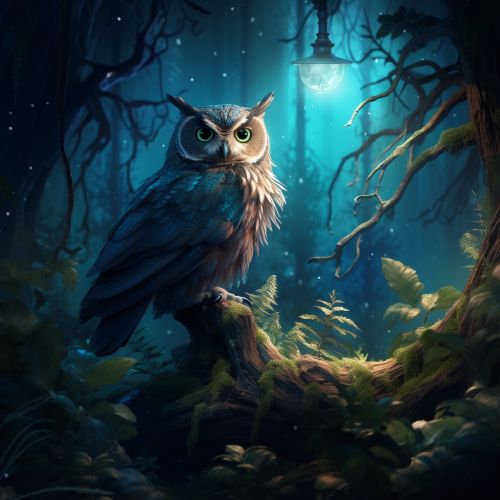Nocturnality
Overview
Nocturnality is an animal behavior characterized by being active during the night and sleeping during the day. This behavior is common in several species, including many mammals, insects, and birds. Nocturnal animals have evolved adaptations that help them survive in the dark, such as enhanced senses of hearing, smell, and specially adapted eyesight. Nocturnality is a form of crepuscular behavior, which is activity during twilight, and it is contrasted with diurnal behavior, which is activity during daylight hours.


Evolution and Adaptation
The evolution of nocturnality is believed to be a result of the advantages it offers in avoiding predators and exploiting resources. By being active at night, animals can avoid the heat and the intense sunlight of the day, which is especially beneficial in hot climates. Nocturnal animals have evolved a range of adaptations to help them navigate and survive in the dark. These include enhanced senses of smell and hearing, and eyes that are adapted to low light conditions. Some nocturnal animals, such as bats, have also developed echolocation to navigate in the dark.
Nocturnal Animals
There are many different types of nocturnal animals, including mammals, birds, insects, and reptiles. Some examples of nocturnal mammals include bats, raccoons, opossums, and many rodent species. Nocturnal birds include owls, nightjars, and some species of parrot. Many insects, such as moths and beetles, are also nocturnal, as are some reptiles, including many species of snake and lizard.
Nocturnal Adaptations
Nocturnal animals have a range of physical and behavioral adaptations that help them survive in the dark. These include:
Sensory Adaptations
Nocturnal animals often have enhanced senses of smell and hearing to help them locate food and avoid predators in the dark. Many nocturnal animals also have eyes that are adapted to low light conditions. These adaptations can include larger eyes, a larger pupil, or a tapetum lucidum, a layer of tissue in the eye that reflects light back through the retina, increasing the amount of light available for the animal to see.
Behavioral Adaptations
Nocturnal animals also have behavioral adaptations that help them survive. These can include being more active during cooler temperatures, which can help them avoid dehydration and overheating. Many nocturnal animals also have specialized diets that take advantage of the different types of food available at night.
Impact on Ecosystem
Nocturnal animals play a crucial role in their ecosystems. They help control pest populations, pollinate plants, and serve as food for other animals. Their nocturnal habits also help to distribute resources more evenly across the day and night, reducing competition for food and other resources.
Human Interaction
Humans have interacted with nocturnal animals in various ways throughout history. Some nocturnal animals, such as bats and owls, have been associated with superstitions and folklore. Today, nocturnal animals are often the focus of wildlife conservation efforts, as many species are threatened by habitat loss and other human activities.
